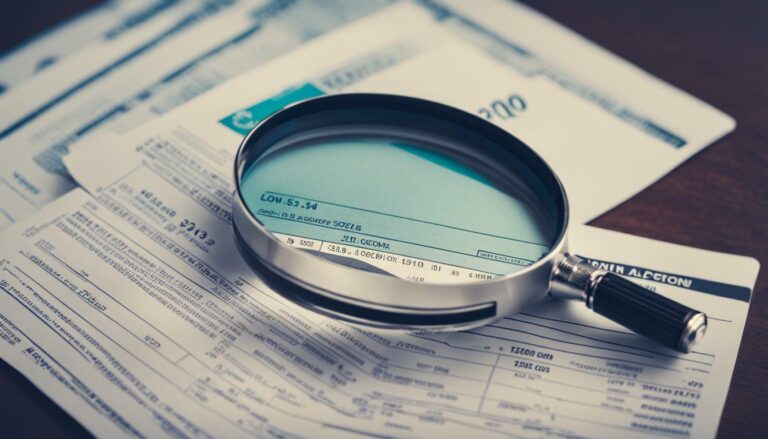Demystifying the Process: Understanding Credit Scoring Algorithms

Credit scoring algorithms are a crucial tool used by lenders to evaluate an individual or entity’s creditworthiness. These algorithms play a vital role in the financial industry, providing lenders with a comprehensive assessment of a borrower’s creditworthiness. By analyzing various financial data, credit scoring algorithms enable lenders to make informed decisions regarding loans and other financial services.
Understanding credit scoring algorithms is essential for both borrowers and lenders. This knowledge allows borrowers to improve their creditworthiness by taking the necessary steps to maintain a positive credit history. For lenders, it ensures they have a reliable method to assess the risk associated with extending credit to individuals or entities.
There are various credit scoring models in use today, each with its own algorithm and methodology. These models take into account factors such as credit history, outstanding debts, payment history, and length of credit history. By analyzing these factors, credit scoring models generate a credit score, which is a numerical representation of an individual or entity’s creditworthiness.
The credit scoring process involves a thorough review of the borrower’s financial data and credit history. Lenders use this information to determine the likelihood of the borrower repaying their debts in a timely manner. The credit score generated by the credit scoring algorithm serves as a quick reference for lenders, providing them with an overview of the borrower’s creditworthiness.
- Credit scoring algorithms are used by lenders to assess creditworthiness.
- These algorithms analyze financial data to generate a credit score.
- Credit scoring models consider factors such as credit history, outstanding debts, and payment history.
- The credit scoring process allows lenders to make informed decisions about extending credit.
- Understanding credit scoring algorithms is essential for borrowers and lenders alike.
Factors Affecting Credit Scores and the Creditworthiness Assessment
The creditworthiness assessment and calculation of credit scores are influenced by various factors that play a significant role in determining a person’s or entity’s financial reliability. These factors include:
🚨 TUIC Errors + Low Credit Score?
CreditScoreIQ helps you build credit faster by reporting utility bills to all 3 bureaus—while you dispute errors.
Start Building Credit Today →- Payment History: A crucial factor in credit score calculation is an individual’s payment history. Lenders analyze whether payments are made on time, late, or missed entirely. Consistently making timely payments positively impacts credit scores, while delinquencies or defaults have a negative effect.
- Credit Utilization Ratio: This ratio compares the amount of credit an individual uses to their available credit limit. High credit utilization can indicate financial strain or an inability to manage credit responsibly, which negatively impacts credit scores. Maintaining a low credit utilization ratio is key to improving creditworthiness.
- Length of Credit History: The length of an individual’s credit history is an essential consideration in credit scoring. Lenders prefer longer credit histories, as they provide more data to assess creditworthiness. A longer credit history with a positive payment record can positively impact credit scores.
- Types of Credit Used: Credit scoring algorithms also analyze the types of credit an individual uses, such as credit cards, loans, or mortgages. A diverse mix of credit accounts demonstrates responsible credit management, positively influencing creditworthiness.
“A diverse mix of credit accounts demonstrates responsible credit management, positively influencing creditworthiness.”
Other factors that can affect credit scores include:
- New Credit Applications: Frequent credit inquiries or opening multiple new accounts within a short period can negatively impact credit scores. It may suggest a higher risk of financial instability or taking on too much debt.
- Credit Age: The average age of credit accounts is another factor considered in credit scoring. Older accounts with a positive payment history contribute positively to creditworthiness.
- Credit Mix: Having a healthy mix of revolving credit (e.g., credit cards) and installment credit (e.g., mortgages, auto loans) can demonstrate responsible credit management and positively impact credit scores.
Understanding these factors and their impact on credit scores is crucial for individuals looking to improve their creditworthiness. By maintaining a good payment history, keeping credit utilization low, and managing credit responsibly, individuals can take steps towards achieving better credit scores.

| Factor | Impact on Credit Scores |
|---|---|
| Payment History | Positive impact when payments are made on time; negative impact for late payments or defaults |
| Credit Utilization Ratio | Lower ratio positively affects credit scores; higher ratio indicates financial strain |
| Length of Credit History | Longer credit history with positive payment record contributes positively |
| Types of Credit Used | Diverse mix of credit accounts demonstrates responsible credit management |
| New Credit Applications | Frequent inquiries or multiple new accounts negatively impact credit scores |
| Credit Age | Older accounts with positive payment history contribute positively |
| Credit Mix | Healthy mix of revolving and installment credit demonstrates responsible management |
Conclusion
Understanding credit scoring algorithms is essential for making informed financial decisions and managing credit effectively. Credit scoring algorithms play a crucial role in the financial industry, helping lenders assess the creditworthiness of individuals and entities.
Credit analysis involves a comprehensive review of various financial aspects, including income, debt, collateral, and cash flow. On the other hand, credit scoring assigns a numerical representation of creditworthiness based on credit history and other factors.
With the advancement of technology, AI-based credit scoring has emerged as a promising solution. Machine learning algorithms analyze a wide range of data points, such as total income, credit history, transaction analysis, work experience, and user behavior analytics, to provide more accurate and individualized credit score assessments.
However, there are challenges associated with AI credit scoring, such as the opacity of the decision-making process and potential bias. To address these concerns, solutions like Datrics offer transparency and interpretability. By integrating machine learning with traditional scoring methods, Datrics ensures clarity and reduces bias in the credit scoring process.
Overall, AI credit scoring with Datrics offers speed, accuracy, and the ability to consider real-time indicators for a more precise assessment of credit risk. This empowers more people to access financial services and opens up opportunities for better financial management.
FAQ
Q: What are credit scoring algorithms?
A: Credit scoring algorithms are mathematical models used by lenders to assess an individual or entity’s creditworthiness. These algorithms analyze various financial factors, such as income, debt, collateral, and cash flow, to assign a numerical representation of creditworthiness based on credit history and other factors.
Q: How is credit analysis different from credit scoring?
A: Credit analysis involves a thorough examination of various financial aspects, whereas credit scoring assigns a numerical representation of creditworthiness based on credit history and other factors. Credit analysis provides a more comprehensive assessment of an individual or entity’s creditworthiness.
Q: How does AI-based credit scoring work?
A: AI-based credit scoring uses machine learning algorithms to analyze a wide range of data points, including total income, credit history, transaction analysis, work experience, and user behavior analytics. By considering these factors, AI-based credit scoring can provide more individualized and sensitive credit score assessments, allowing more people to access financial services.
Q: What challenges are associated with AI credit scoring?
A: There are challenges with AI credit scoring, such as the opacity of the decision-making process and potential bias. However, solutions like Datrics provide transparency and interpretability, allowing analysts to understand the factors influencing credit decisions. Datrics also integrates machine learning with traditional scoring methods to ensure clarity and reduce bias.
Q: What is the process of AI credit scoring with Datrics?
A: The process of AI credit scoring with Datrics involves gathering data, building models, interpreting predictions, and addressing decision bias. This comprehensive approach offers speed, accuracy, and the ability to consider real-time indicators for a more precise assessment of credit risk.
Ready to Improve Your Credit?
Disputing TUIC errors is step one. Step two? Boost your score by reporting utility payments with CreditScoreIQ.
Get Started Now (Only $1 Trial) →3-bureau reporting • $1M identity insurance • Dark web monitoring






